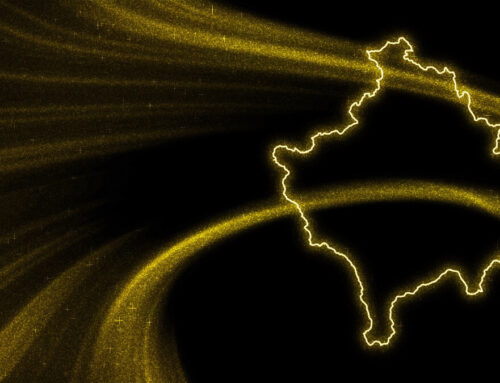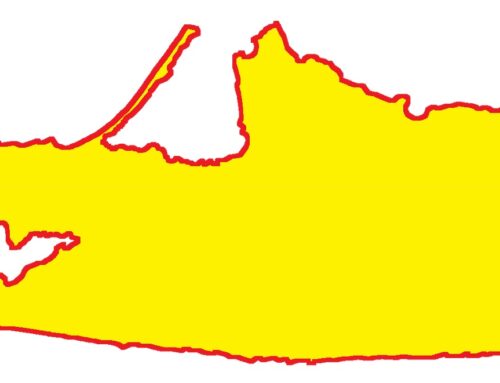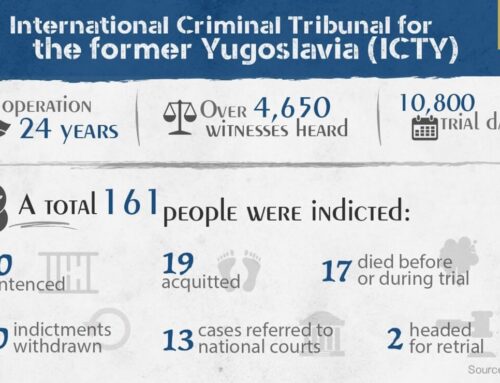Dionis Cenuşa
“Any new European approach to the peaceful settlement of territorial conflicts in Georgia, Moldova, Ukraine and Nagorno-Karabakh will change the rules of the game only if the EU leaves open all the peaceful tools it currently uses ...“
The momentum for greater involvement of the European Union (EU) in the resolution of territorial conflicts in the eastern neighborhood has intensified after each wave of eastward enlargement. Following the launch of the Eastern Partnership (EAP) in 2009, this issue has gained greater visibility. As a result, the situation around the conflicts in Moldova, Georgia, Nagorno-Karabakh (the territorial dispute between Armenia and Azerbaijan) and later in Lugansk and Donbas, began to appear constantly on the bilateral and multilateral agenda of Brussels with the EAP states. Thus, the European side has begun to take seriously the threats posed by these territorial conflicts to its neighbors, including itself. However, an individual and focused European vision related to the resolution of territorial conflicts in the common neighborhood with Russia has yet to be defined.
The first and so far only initiative to develop measures focused on the resolution of territorial conflicts in the common neighborhood took place during the EU-Russia talks on the formation of “four EU-Russia common spaces“, launched at the Saint Petersburg summit in 2003. The EU and Russia have adopted “road maps” to translate the “common spaces” into life, which has not been successful. The launch of the European Neighborhood Policy in 2004 and the geopolitical reorientation of Eastern European states towards the West, including as a result of massive democratic protests (Georgia – “Rose Revolution” in 2003; Ukraine – “Orange Revolution” in 2004), were interpreted by Russia as interference in its area of influence.
Russia’s military aggression against Georgia in 2008 and the launch of the Polish-Swedish Eastern Partnership initiative in 2008-2009 have increased tensions in EU-Russia relations. However, the collapse of bilateral relations to negative temperatures came after the annexation of Crimea and the militarized support for territorial separatism in the Lugansk and Donbas regions, starting in 2014. Russian military and hybrid expansionism have led to the introduction and maintenance of the EU sanctions for the past seven years. In such a tumultuous context, the discussion between Russia and the EU on the common identification of solutions to conflicts in the common neighborhood has disappeared from the radar.
Romania’s initiative and the reality on the ground
Currently, at the initiative of Romania, within the EU, a European approach focused on the resolution of territorial conflicts in the Black Sea region has been actively discussed. The details of this approach are unknown to the public. According to researcher Vladimir Socor, the Romanian Ministry of Foreign Affairs, led by Bogdan Aurescu, has developed a set of recommendations, which are tested in discussions with member states and EU institutions responsible for European foreign affairs. The Romanian side’s suggestions summarize various initiatives and mechanisms that, at first glance, exist in one form or another, separate and desynchronized.
Among the ideas spread by Romanian diplomacy is (1) the creation of a coordination format on the issue of territorial conflicts between the EU and Georgia, Moldova and Ukraine. The format of the “Associated Trio” already exists, established by these countries in May 2021. At the level of country presidents, the Trio spoke in favor of seeking peaceful solutions to territorial conflicts (IPN, June 2021), by “expanding the role and engagement of the EU“.
Another useful proposal is (2) to appoint an EU responsible for territorial disputes to coordinate European programs aimed at building the resilience of the states in question. On the one hand, the EU applies rigorous “5 principles” of interaction with Russia, essential and closely linked to the sanctions policy. Openly, the EU opposes the privileged sphere of influence that Russia pursues in the western post-Soviet neighborhood. Furthermore, Brussels does not shy away from highlighting the Russian factor as part of the territorial conflicts in Georgia, Moldova and Ukraine, not as a mediator with positive intentions (EU, June 2021). On the other hand, the EU has already formulated a series of instruments to strengthen the resilience of the EaP states, including on the side of strengthening state institutions and the security of their eastern neighbors (EU, March 2020).
The list of recommendations also includes (3) the proposal to assume and replicate the Moldovan model of engaging the Transnistrian region in the process of liberalizing trade with the EU, in exchange for complying with the trade component of the Association Agreement. The dynamization of exports of goods to the European market (January-June 2021: EU – 38% of total exports from Transnistria; Russia – less than 10%) makes it possible to achieve a certain degree of “Europeanisation” of commercial practices in the region and its standardization with those applied by the constitutional authorities. As a result, dependence on the EU market is increasing, which may augment the relevance of the EU’s political voice among separatist de facto decision-makers. However, there are downsides that raise questions about the usefulness of the Moldovan model. First of all, the success of the exports of Transnistrian goods (scrap metals) to the EU market is due to the competitive advantage offered by the low production costs of companies in the region, which is possible thanks to the low price of Russian natural gas. In addition, the region does not pay for the gas consumed, which has led to a surge in gas debt with Russia to almost $ 7 billion. At the same time, the region’s economy has the raw material to deliver goods to the EU at the expense of certain grey schemes (controlled by local oligarchs), as well as smuggling from Ukraine (particularly through the Odesa region). These “benefits” must be liquidated. The government plan of the new executive in Chisinau aims to combat corruption schemes in the public sector, and President Maia Sandu has started talks with Kyiv on ways to cooperate to carry out cross-border actions against smuggling.
Put together and carefully arranged in an integrated and strategic approach, the elements mentioned above and others that have not yet been presented to the public can help shape a timely, proactive and up-to-date EU approach to territorial conflicts. At the same time, the development of a European approach to territorial conflicts should ensure flawless interoperability with the instruments already in use: the post-2020 Eastern Partnership and the iron “5 principles” in relation to Russia. Furthermore, European actors need an objective and exhaustive assessment of the models of interaction with territorial conflicts, proposed as good practices. For example, Moldova’s experience related to the integration of trade from the Transnistria region into exports to the EU contains a number of worrying issues that can lead to instability.
Four different territorial conflicts
The “post-factum foreign policy” for which the EU is often criticized, although it corresponds exactly to the civilian character of European power, has limited effectiveness that does not discourage belligerent regional actors, such as Russia. This is seen from Moscow as a structural weakness of its western geopolitical opponent (IPN, November 2020). Therefore, to overcome the disadvantage of “statements diplomacy“, the EU needs an approach that takes into account the local realities of territorial conflicts. Specifically, the EU needs candid realism about the aftermath of the 2020 Azerbaijani-Armenian war, the stalemate in the settlement of the Transnistrian dispute, the “moving” military occupation or “borderization” (tacit change of borders within Georgia) and the continuation of the Russian military aggression in Lugansk and Donbas.
In practice, the EU has the ability to influence the situation on the ground only in the case of Moldova, having at its disposal several tools: 1) participation as an observer in the “5 + 2” negotiation format; 2) finance confidence-building measures, through programs implemented by the United Nations Development Programme (UNDP).; 3) monitor the implementation of the provisions of the Deep and Comprehensive Free Trade Agreement (DCFTA) by the authorities and export companies of the separatist region; 4) the dispatch of the EUBAM Mission on the border with Ukraine targeting the Transnistria segment, in the period 2005-2023, with the possibility of renewing the extension of mission’s mandate.
The second place where the EU has some influence, albeit partial, is Georgia. The EU contribution consists of the Mission of Monitoring (EUMM), which monitors the situation on the administrative lines with Abkhazia and South Ossetia. This civilian mission that has peace-keeping features is evaluating how the ceasefire agreement, signed in August 2008. From the beginning, the mandate of the mission was insufficient to force Russia to implement the agreed agreement, the main objective of which is to return to the status quo before the war. Instead, the Russian side has facilitated the recognition of the independence of the separatist regions, which benefit from Russian military assistance and freely move “their borders” within Georgian territory.
The EU presence in the case of Ukraine does not consist of specialized civilian missions around the territorial conflict in Donbas. Individual and economic sanctions against Russia and separatist actors in the occupied and/or annexed territories are the main tool that the EU firmly uses to assist the Ukrainian side. Contrary to the case of Moldova, the EU is not authorized, not even as an observer, in the “Norman format” of negotiations. Furthermore, Ukraine does not benefit from monitoring missions, following the Georgian model.
For the Nagorno-Karabakh conflict, the EU does not have tools like those applied in Moldova, Georgia or Ukraine. In the latest statements by European officials, the willingness of the EU to offer mediation in the process of delimitation and demarcation of the borders between Armenia and Azerbaijan was emphasized. But these intentions are not taken seriously by Armenia, which is even more dependent on Russia because it needs its peacekeeping mission in the Nagorno Karabakh (Artsakh) territories, which it retained in possession after the surrender in November 2020. Subsequently, Armenia would agree to the extension of the mandate of the Russian peacekeepers to achieve the delimitation and demarcation of the border with Azerbaijan, likely only with the permission of the latter. Similarly, Brussels’ mediation proposal received no reaction from Azerbaijan, which shows devotion to increasing Turkey’s geopolitical involvement in the South Caucasus, not the EU (IPN, June 2021).
Compared to the conflicts in Georgia, Moldova or Ukraine, Russia’s involvement in the Nagorno-Karabakh conflict is quite indirect. Moscow intelligently uses Armenia’s vulnerabilities, which became even more visible after the defeat caused by Azerbaijan, whose military superiority was due to Turkish weapons (Bayraktar drones). For these reasons, the EU’s approach to Nagorno Karabakh requires significant differentiation, taking into account the parallel implications of the Russian and Turkish factors in the region.
In lieu of conclusions…
It is clear that the EU needs a specialized approach to resolve territorial disputes in the Black Sea basin. However, this approach will need to be flexible to be relevant to the four very different conflicts in the Eastern Partnership.
The EU must take a pragmatic stance. To exert an effective and differentiated influence on the actors involved in the resolution of the conflicts in question, European officials must emerge from the real capacities and resources that they have or can generate. Although in relation to the Transnistrian conflict, Brussels has several levers in its arsenal, some of which – the orientation of Transnistria’s exports to the EU market – involve hidden risks, which require critical evaluation.
Any new European approach to the peaceful settlement of territorial disputes in Georgia, Moldova, Ukraine and Nagorno-Karabakh will change the rules of the game only if the EU leaves open all the peaceful tools it currently uses. Therefore, the new civilian missions could be beneficial in stabilizing the situation, especially in Ukraine. Supporting confidence-building measures would restore dialogue between the parties to the conflict, a relevant measure for Georgia and Nagorno-Karabakh. The application of economic sanctions against (non-) state actors, which aggravates the conflict, could be valid for Moldova and Georgia. All of these tools, incorporated into a future EU approach, may be useful to discourage attempts by separatist regimes and their external protectors to destabilize the situation or prevent the resolution of territorial conflicts, in strict accordance with international law.
Source:
https://www.ipn.md/en/resolving-territorial-conflicts-in-the-eastern-partnership-in-search-of-7978_1083637.html
This analysis is published for the German Hanns Seidel Foundation and the IPN News Agency. FOMOSO got permission to publish it as well.






